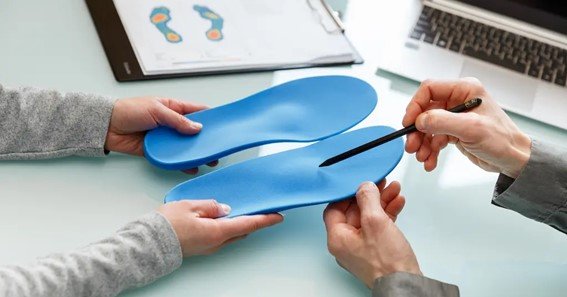Orthopedic inserts, also known as orthotics, are often prescribed to individuals suffering from foot pain, alignment issues, or chronic conditions such as plantar fasciitis. These inserts can provide relief and help improve mobility, but they can also be expensive. A common question many people ask is, “does insurance cover orthopedic inserts?” In this article, we will explore whether orthopedic inserts are covered by insurance, the claim process, and what you should expect in terms of coverage.
Does Insurance Cover Orthopedic Inserts?
The short answer to “does insurance cover orthopedic inserts?” is yes, in many cases, but it depends on your insurance policy and the medical necessity of the inserts. Most health insurance providers offer coverage for orthopedic inserts if they are prescribed by a doctor to treat a specific medical condition. However, not all insurance plans cover custom inserts, and there may be limits on the type of orthotics covered.
Orthopedic Inserts Insurance Coverage
Orthopedic inserts insurance coverage varies from plan to plan. Some policies will cover over-the-counter orthotics, while others will only cover custom-made inserts. Custom inserts tend to be more expensive, but they are tailored to your specific foot shape and medical condition. If you need custom inserts, it’s important to check your plan’s specific coverage for custom orthopedic inserts before making a purchase.
Are Orthopedic Inserts Covered by Insurance?
Are orthopedic inserts covered by insurance? Generally, yes, but only if they are considered medically necessary. Your doctor must diagnose a specific condition that requires orthotic support, such as flat feet, arthritis, or diabetes-related foot issues. Once you have a prescription, your insurance provider will review the case to determine if they will cover the cost of the inserts. Without a clear medical reason, many insurers may deny coverage for orthopedic inserts, particularly if they are considered elective or for general comfort.
Medical Necessity for Orthopedic Inserts Coverage
For health insurance for orthopedic inserts to apply, medical necessity is key. Insurers typically require documentation from your doctor outlining why the inserts are required to treat your condition. This documentation may include details about your diagnosis, symptoms, and how the inserts will help alleviate pain or correct foot alignment. Medical necessity for orthopedic inserts coverage is essential for insurance approval, so be sure to work closely with your healthcare provider to gather the necessary paperwork.
Orthotic Inserts Insurance Claim Process
Navigating the orthotic inserts insurance claim process can seem complicated, but understanding the steps will help you manage it smoothly. Here’s what to expect:
- Obtain a prescription: First, you’ll need a prescription from your doctor explaining why the inserts are medically necessary.
- Submit the claim: Once you’ve purchased the inserts, you or your healthcare provider will need to submit a claim to your insurance company along with supporting documentation, including the doctor’s prescription and receipt for the inserts.
- Receive approval or denial: Your insurance provider will review the claim and either approve it for reimbursement or deny it if they don’t deem the inserts medically necessary or within their coverage limits.
Orthopedic Shoe Inserts Insurance Limits
While insurance benefits for orthopedic inserts can significantly reduce costs, it’s important to understand the orthopedic shoe inserts insurance limits. Many insurance plans have restrictions on how much they will pay for inserts, whether they will cover custom or off-the-shelf options, and how often you can receive coverage. Some policies may only allow reimbursement for a new pair of inserts every few years, while others may limit the amount they’ll pay toward the total cost.
Insurance Reimbursement for Orthopedic Insoles
If you’ve paid out of pocket for orthopedic insoles, you may be eligible for insurance reimbursement for orthopedic insoles. To get reimbursed, you’ll need to submit a claim along with the doctor’s prescription and a copy of your receipt. Be sure to check whether your insurance plan requires you to use a specific supplier or brand, as some policies may only reimburse purchases made through approved providers.
Conclusion: What to Expect From Orthopedic Inserts Insurance Coverage
So, does insurance cover orthopedic inserts? Yes, but coverage depends on your insurance plan and the medical necessity of the inserts. Understanding the requirements for coverage, including pre-approval and documentation from your doctor, can help you navigate the insurance process smoothly. Always check with your insurance provider to ensure you know the limits and restrictions related to your coverage for orthopedic shoe inserts.
FAQ
1. Does insurance cover orthopedic inserts?
Yes, insurance can cover orthopedic inserts if they are deemed medically necessary and prescribed by a doctor.
2. Are orthopedic inserts covered by insurance if they are custom-made?
Yes, custom orthopedic inserts are often covered by insurance, but you may need to provide documentation proving medical necessity.
3. What is the orthotic inserts insurance claim process?
The orthotic inserts insurance claim process involves submitting a doctor’s prescription, a receipt for the inserts, and other supporting medical documentation to your insurance provider.
4. Are there limits to insurance coverage for orthopedic shoe inserts?
Yes, many policies have orthopedic shoe inserts insurance limits, including caps on the number of inserts covered or the reimbursement amount.
5. How do I get insurance reimbursement for orthopedic insoles?
To get insurance reimbursement for orthopedic insoles, submit a claim with the necessary documentation, including a prescription and proof of purchase, to your insurance provider.










